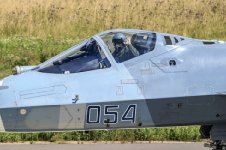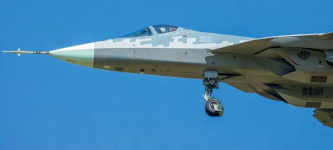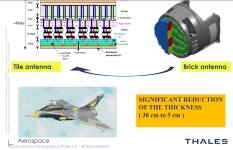It's a Soviet program, so it wasn't something Russia could afford in the first place. Armata became the more affordable replacement. It's at least cheaper than what we are paying for our T-90S.
That's because we artificially inflate the cost of our T-90s due to inefficient OFB license production & jacked-up ToT costs.
All things being equal (e.g. for Russia's own use), T-14 is way more expensive. There's just so much more stuff on it.
While in the 90s they used exports to fund their own programs, you can't draw conclusions based on that for today. The Russians are richer than India and have a bigger budget than we do, at least 3 times more, peacetime. I don't see why they cannot afford new stuff. Their SSN/SSBN programs themselves far exceed our funding potential.
Because the Russians actually set goals regarding what needs to be produced, which in informed by their strategic-level thinking of what needs to be done to secure Russia's interests in the next 10 years. They may be terribly informed plans, but they are plans nonetheless.
In a context of economic stagnation, arms production remains a priority for Moscow. The GPV-2027 spending priorities are a useful indicator of the Kremlin’s long-term political mindset.

ridl.io
We on the other hand have no clear long-term vision & budgeting, or how to go about achieving it. We come up with a grand scheme, and then change everything 2 years down the line.
You cannot use us as a yardstick to measure this sort of thing really.
As of the Russians, they have severely miscalculated, and a serious adjustment is due:
Крупнейшая в современной российской истории госпрограмма производства оружия, на которую из федерального бюджета было выделено 20 трлн рублей за последние 10 лет, сдана в утиль.

www.moscowtimes.eu
Guess what the new plan is going to suggest? I'd bet its something along the lines of "stop wasting money on white elephant programs and start building things that we know already work & which we know how to operate". That means, like I said, more T-72B3s and less T-14s.
You can't eyeball stealth.
You can't see the imperfections on the F-22 because of its paint, compared to the Su-57's lighter colour. The F-35 is a different design altogether, which uses jackets.
There are several general rules you can eyeball. Two giant air intake nacelles hanging off the fuselage for example, is not stealthy. What you cannot do is to put a number on it by eyeballing alone.
There are definitely RCS-reduction features on the Felon, like making the corners of the nacelles smooth instead of sharp as on the Flanker. But its far from VLO.
It's not that the Russians don't understand the rules of stealth, they do:
...it's just that they chose to not follow them. Most likely in the pursuit of lower construction costs & production-line complexities. The Su-57 is pretty much a signature-reduced Flanker fuselage with the only big difference being the airfoils & wingform.
The Chinese however, went the US way with regard to the airframe. And so are we.
I'd argue the Su-57 is as stealthy as the F-22, but falls short of the F-35.
In all-aspect stealth, F-22 is the king by a huge margin.
Based on inputs from radar experts, it is said that the Su-57's frontal RCS is similar to the F-22, ie, it falls in the VLO category. The jury is still out on the engine.
Are these experts of the same ilk as Carlo Kopp?
Passive systems aren't good at ranging. Combine the UV MAWS with radar, you can get a far better result. It will be a better anti-missile system than just using IR/UV MAWS or even a combination of the two. In fact, if stealth wasn't a requirement, using radar would be far better for pretty much everything.
The ones who have better radars + better passive sensors + better stealth than the Russians seem to think otherwise.
The Russians are champions at materials and aerodynamics, it's well within their abilities to make an interceptor missile.
If they're smart, they'll replace their existing stock of BVRAAMs with a license-produced Astra with an Indian seeker.

The T-50 didn't, but the IAF wanted it on their version. The space there is more than enough for a radar. PDP was complete, so the IAF knew what was necessary to get it done.
Internet myths bro.
In fact a rear facing radar on this plane would be rather pointless. It would be far less powerful than the main N036 so probably won't acquire targets at the same ranges...the side radars in front actually have sensor overlap with the main array, so easy for the computer to hand off a specific target to maintain track even after it moves out of main array's FoV. The one in rear would be on its own.
If its for warning from threats approaching from the rear sector, it would be looking at their noses while presenting the Su-57's rear...a more disadvantaged position wrt who sees & shoots first cannot possibly be imagined. There aren't any rear facing L-bands so they cannot even tell the tail radar where to focus.
Far more beneficial to place a high-power jammer there. That way, you can use the rear-facing 101KS-Us to detect inbound missiles and use the jammer to spoof their seekers.
In fact that is more along the lines of IAF's own philosophy. You'd recall we actually got the French to install a new rear-facing V/HBJ on our Rafales, which wasn't present on any other export or French-operated models - so we know that was an IAF request.
Even Rafale is getting 360 deg radar.
Nah, for Rafale too its just side arrays.
Regardless, you don't even bother going with more active sensors unless:
1) Your passive tech can't do the job like EODAS can
OR
2) Stealth is not that big a concern for you to begin with, so might as well go active
For Rafale, being a 4.5 Gen non-VLO airframe, we know the 2nd option is true. You can imagine which of the two is true for Su-57...possibly both.
AMCA is still unknown, so I don't know how you have come to such a conclusion.
Just going off of what we know so far.
It has nothing to do with power and everything to do with cooling. The smaller the space, the harder it is to cool systems. Which is why such tech first reaches ground radars, followed by ships and then other vehicles.
It's the same. If the application doesn't require much power, it doesn't require much cooling either.
And you forget the radar has to track projectiles at hypersonic speeds. It's not like a police radar gun.
That's why they work in Ka-band (27-40GHz), to track fast moving objects. Btw, the police radar guns work in the same frequency.
As do commercially-available ballistic chronographs like this one:
This particular model is capable of tracking projectiles upto 3900 ft/s or about Mach 3.5 - your typical 120mm FSAPDS travels at Mach 4-5. You just need a higher spec to get that, but there's nothing fundamentally unique about it. Your typical ATGMs & RPGs on the other hand (the real threat APS is supposed to deal with) don't even break the sound barrier.
The only reason you even need a phased array for tank application, like I said, is because you need to get a decent range (to give the APS enough time to throw a countermeasure) + be able to track multiple objects.
Other than that, APS radar is a very low-tech application. I mean it needn't even register the terrain, it just has to watch for objects moving above a certain speed, classify them by size & calculate their vector - basic doppler application. Which means this BEL radar is actually far more sophisticated than what the Russians have on T-14:
^^ This can actually scan & classify objects on the terrain itself.
What Flanker is good at? Lol. It's design is so good that Chinese are inducting it even now in 100s. Over 240 J16s and many J15s to be precise. Its base design is so good that an upgraded Flanker like J16 with AESA radar and QWIP based IRST given a very strong fight to a full-on VLO fighter like J-20(as per Chinese reports).
And SU57 is not fully developed yet. Let it come with Type-30 engines first in SU57M iteration, then we shall see how good it's.
Do the Chinese have a choice? Not like they can buy a Rafale or F-15EX if they wanted to.






 )
)












